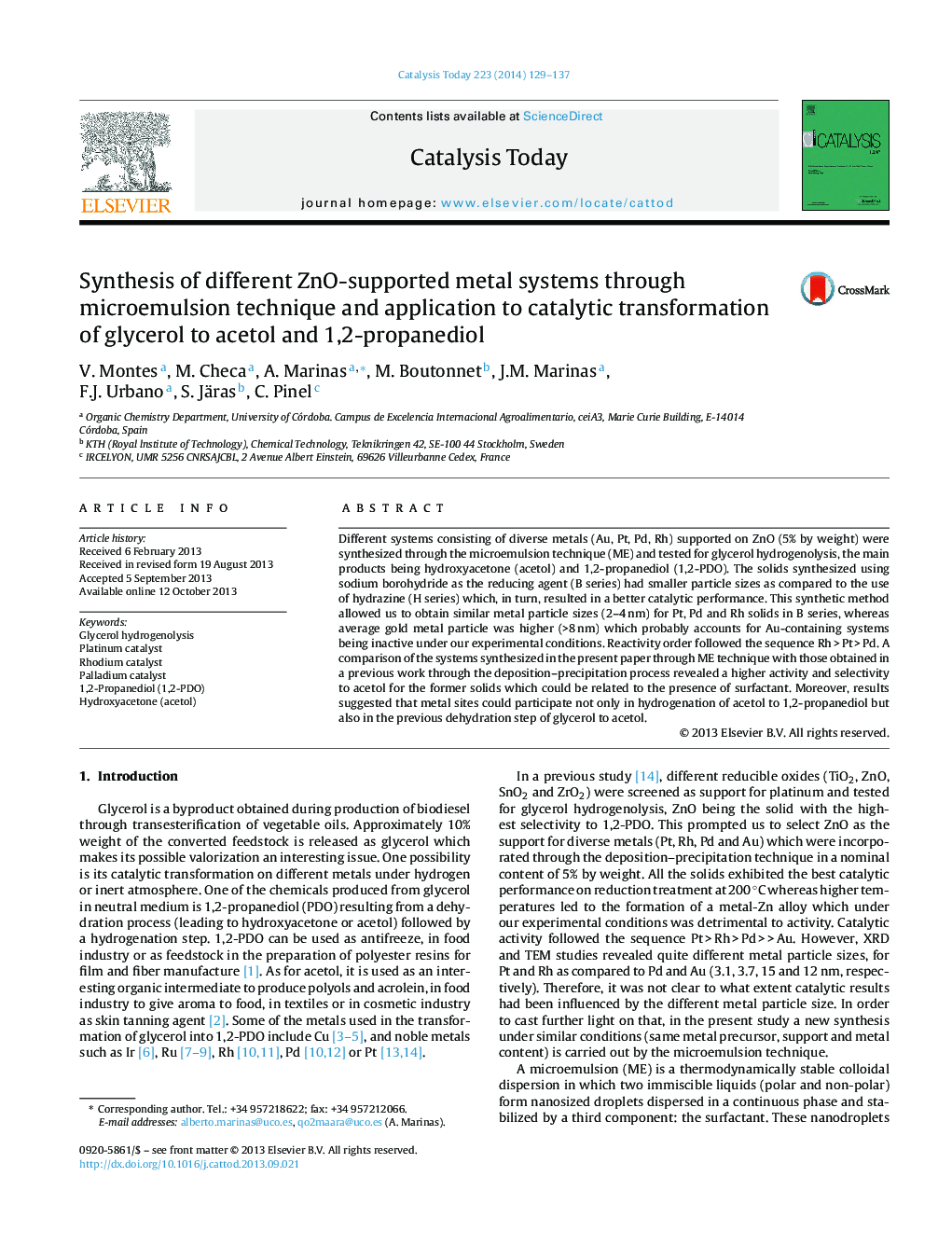| کد مقاله | کد نشریه | سال انتشار | مقاله انگلیسی | نسخه تمام متن |
|---|---|---|---|---|
| 54737 | 47024 | 2014 | 9 صفحه PDF | دانلود رایگان |

• Rh, Pt, Pd and Au on ZnO were tested for glycerol catalytic transformation into 1,2-PDO and acetol.
• The synthetic approach (microemulsion) allowed us to obtain similar particle sizes for Pt, Pd and Rh.
• Glycerol conversion order followed the sequence Rh > Pt > Pd (Au was inactive under our experimental conditions).
• Higher activity and selectivity for systems synthesized through microemulsion as compared to deposition–precipitation method.
• The metal seems to participate both in the hydrogenation of acetol to 1,2-PDO and in the previous dehydration step of glycerol to acetol.
Different systems consisting of diverse metals (Au, Pt, Pd, Rh) supported on ZnO (5% by weight) were synthesized through the microemulsion technique (ME) and tested for glycerol hydrogenolysis, the main products being hydroxyacetone (acetol) and 1,2-propanediol (1,2-PDO). The solids synthesized using sodium borohydride as the reducing agent (B series) had smaller particle sizes as compared to the use of hydrazine (H series) which, in turn, resulted in a better catalytic performance. This synthetic method allowed us to obtain similar metal particle sizes (2–4 nm) for Pt, Pd and Rh solids in B series, whereas average gold metal particle was higher (>8 nm) which probably accounts for Au-containing systems being inactive under our experimental conditions. Reactivity order followed the sequence Rh > Pt > Pd. A comparison of the systems synthesized in the present paper through ME technique with those obtained in a previous work through the deposition–precipitation process revealed a higher activity and selectivity to acetol for the former solids which could be related to the presence of surfactant. Moreover, results suggested that metal sites could participate not only in hydrogenation of acetol to 1,2-propanediol but also in the previous dehydration step of glycerol to acetol.
Figure optionsDownload high-quality image (194 K)Download as PowerPoint slide
Journal: Catalysis Today - Volume 223, 15 March 2014, Pages 129–137